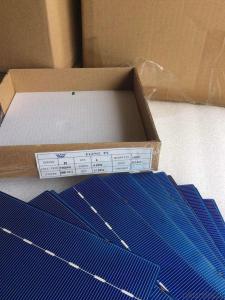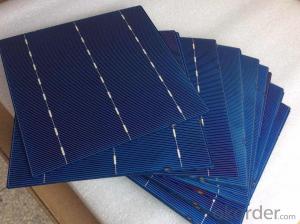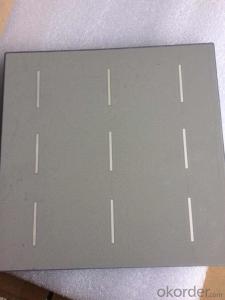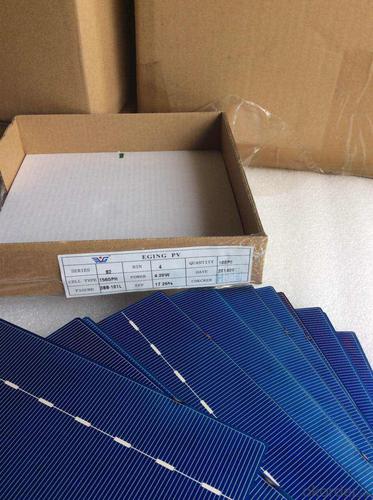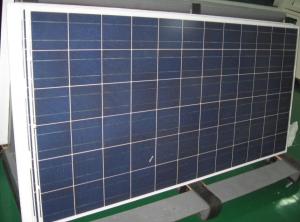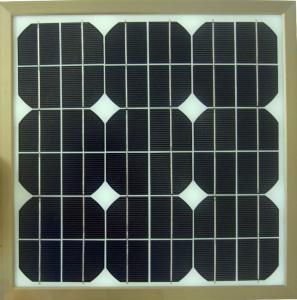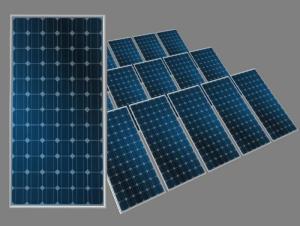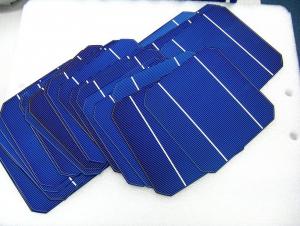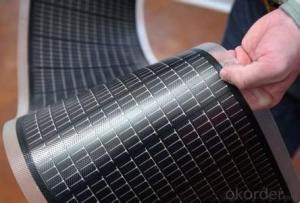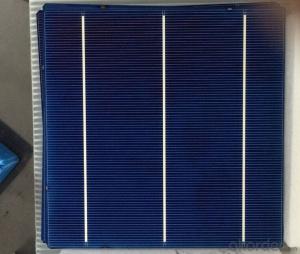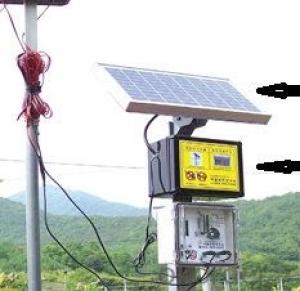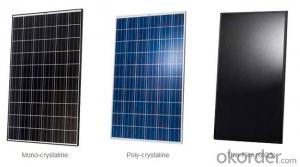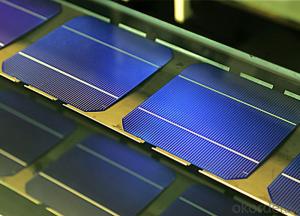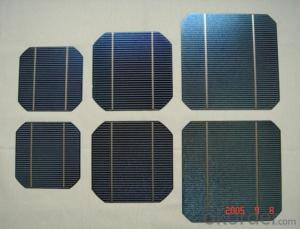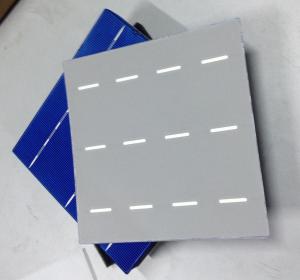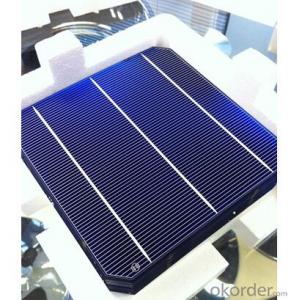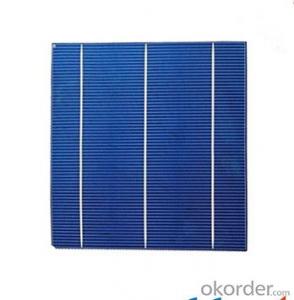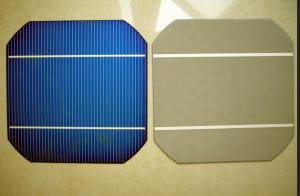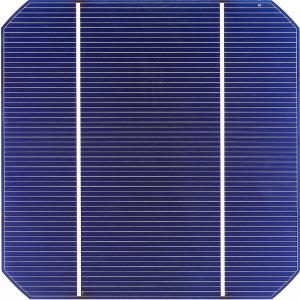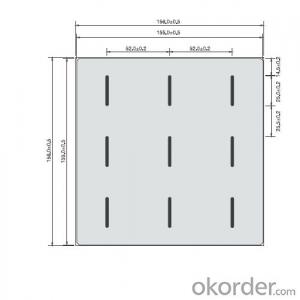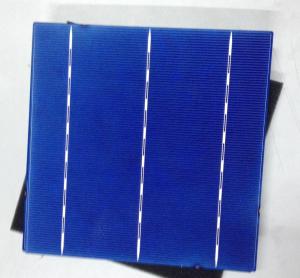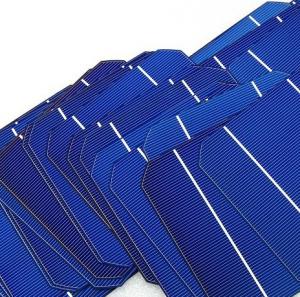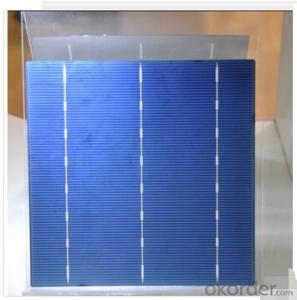Azure Solar Cells - World-Beating 25-Year Lifespan - 17.7% Efficiency
- Loading Port:
- Shanghai
- Payment Terms:
- TT OR LC
- Min Order Qty:
- 1000 pc
- Supply Capability:
- 500000 pc/month
OKorder Service Pledge
OKorder Financial Service
You Might Also Like
Brief Introduction of Solar Cells
A solar cell, is an electrical device that converts the energy of light directly into electricity by the photovoltaic effect, which is a physical and chemical phenomenon. It is a form of photoelectric cell, defined as a device whose electrical characteristics, such as current, voltage, or resistance, vary when exposed to light. Solar cells are the building blocks of photovoltaic modules, otherwise known as solar panels.
Introduction of our Company
We are one of the largest vertically integrated Solar Technology companies in industry and has locations in all of the key target markets. This reduces transport distances and allows for cost-optimized production processes. Uniform quality standards and high-tech manufacturing are essential to our high product standard.
Our production steps starting with silicon through to the final module are the result of highly skilled inventive team of research group in our R&D centers. The ties to the Technical Universities at home in China and our R&D locations around the world make for an innovative atmosphere, hands on experience with a large pool of experts and superb skills.
Though many homeowners are eager to implement solar energy strategies, home energy conservation and efficiency are essential precursors. By reducing your energy demand, you can dramatically decrease the overall dependence on fusel fuel for power production. Change out incandescent light bulbs with LED lights; invest in Energy Star-rated products for appliances, water heaters and heating and cooling systems; and seal and insulate your home . Many utility companies offer energy audits to help you determine how to best improve your household energy efficiency.
Passive solar design uses the light and heat from the sun without mechanical devices. Some passive solar designs include orienting the house for maximum solar gain. When building a new home, implementing passive solar concepts can save you thousands of dollars in future heating, cooling and lighting costs. Existing homes can be improved by implementing specific passive solar design concepts.
Specifications of Polycrystalline Solar Cells
Format : 156 mm × 156 mm ± 0.5 mm
Thickness: 210 μm ±40 μm
Front (-) : 1.5mm bus bars (silver),blue anti-reflection coating (silicon nitride)
Back (+) : 2.5mm wide soldering pads (silver) back surface field (aluminium)
Efficiency (%) | Pmpp (W) | Umpp (V) | Impp (A) | Voc (V) | Isc (A) |
18.00% | 4.38 | 0.528 | 8.291 | 0.631 | 8.869 |
17.80% | 4.33 | 0.525 | 8.252 | 0.629 | 8.821 |
17.60% | 4.29 | 0.532 | 8.053 | 0.633 | 8.541 |
17.40% | 4.23 | 0.528 | 8.092 | 0.624 | 8.632 |
17.20% | 4.19 | 0.524 | 7.992 | 0.62 | 8.458 |
17.00% | 4.14 | 0.52 | 7.972 | 0.623 | 8.5 |
Advantage of Polycrystalline Solar Cells
1. Tire-1 Solar Cells’ Manufacturer Quality Guarantee. With a complete and sophisticated quality government system, our Quality Management have arrived world’s leading place. Customer can receive Tire-1 Cells Maker’s Quality Standard Products.
2. Trusted Warranty. We can supply trusted after-sales service to our customer. If our cells are found not in conformity to the specification of manufacturer, or should the inspected quantity found in shortage, or should the packing found damaged, the buyer has the right to claim to the seller. The claim, if any, should be presented to seller within 30 days after cargo's arrival date to the port, together with related inspection report and photos issued and provided by a reputable independent surveyor such as SGS.
3. World’s Leading Manufacturer Equipment. We imported the newest and leading production equipment from abroad. Advanced equipment can guarantee the stable quality of cells. Auto production line can also save labor cost which will further cut our production cost.
4. Bulk supply: With the production capacity of 500MW, we can produce large quantity every month. This can satisfy most customer requirement.
Usage of Polycrystalline Solar Cells
Solar cells are often electrically connected and encapsulated as a module. Photovoltaic modules often have a sheet of glass on the front (sun up) side, allowing light to pass while protecting the semiconductor wafers from abrasion and impact due to wind-driven debris, rain, hail, etc. Solar cells are also usually connected in series in modules, creating an additive voltage. Connecting cells in parallel will yield a higher current; our solar cells have passed IEC Certification. With high and stable quality, our cells can greatly improve the performance of Solar Modules.
Applications of Polycrystalline Solar Cells
Assemblies of photovoltaic cells are used to make solar modules which generate electrical power from sunlight, as distinguished from a "solar module" or "solar panel". A solar array generates solar power using solar energy.
Packaging & Delivery of Polycrystalline Solar Cells
Carton Box Package and Deliver by air. It should be noticed that it should be avoid of water, sunshine and moist.
Factory Picture of Solar Cells
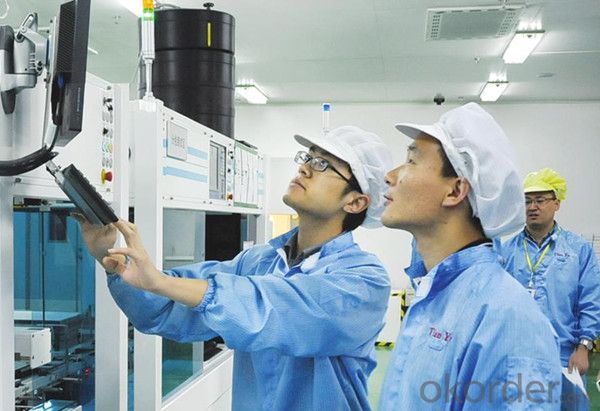
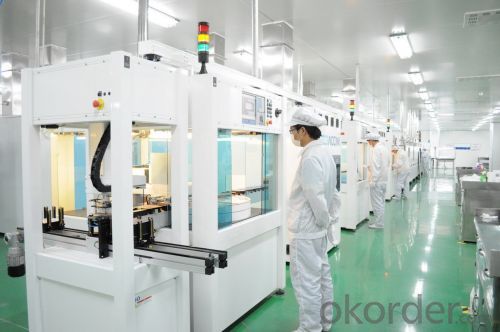
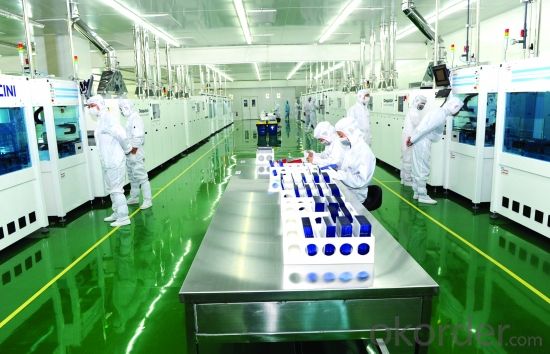
FAQ
We have organized several common questions for our clients,may help you sincerely:
1. What’s price per watt?
A: It’s depends on the quantity, delivery date and payment terms of the order. We can talk further about the detail price issue. Our products is high quality with lower price level.
2. Can you tell me the parameter of your solar cells?
We have different series of cells with different power output, both from c-si to a-si. Please take our specification sheet for your reference.
3. How do you pack your products?
We have rich experience on how to pack the panels to make sure the safety on shipment when it arrives at the destination.
4. Can you do OEM for us?
Yes, we can.
5. How long can we receive the product after purchase?
In the purchase of product within three working days, We will arrange the factory delivery as soon as possible. The perfect time of receiving is related to the state and position of customers. Commonly 7 to 10 working days can be served.
- Q: Are solar cells affected by temperature?
- Yes, solar cells are indeed affected by temperature. High temperatures can cause a decrease in the efficiency of solar cells, resulting in reduced power output. Conversely, low temperatures can sometimes lead to a slight increase in efficiency.
- Q: What is the role of tracking systems in maximizing solar cell efficiency?
- Tracking systems play a crucial role in maximizing solar cell efficiency by continuously aligning solar panels with the sun's position throughout the day. This ensures that the panels receive maximum sunlight exposure, optimizing the conversion of solar energy into electricity. By tracking the sun's movement, these systems enable solar cells to operate at their peak efficiency, resulting in increased energy production and higher overall system performance.
- Q: Which one is better on the solar cells panel? The Monocrystal Solar Energy Cell or photovoltaic cell?
- The photovoltaic cell is better in collecting the sunlight, which means it will be more efficient when the sunlight is better.
- Q: Can solar cells be used to power irrigation systems?
- Yes, solar cells can be used to power irrigation systems. Solar cells convert sunlight into electricity, which can be stored in batteries and used to power irrigation systems. This provides a sustainable and renewable energy source for agriculture and reduces dependency on traditional power grids.
- Q: How do solar cells perform in areas with high levels of salt spray?
- Solar cells generally perform well in areas with high levels of salt spray. However, prolonged exposure to salt spray can potentially corrode the surface of the cells, reducing their efficiency over time. Regular maintenance, such as cleaning and protective coating, can help mitigate the effects of salt corrosion and ensure optimal performance.
- Q: Can solar cells be used to power farms or agricultural operations?
- Yes, solar cells can be used to power farms or agricultural operations. Solar panels can be installed on rooftops, fields, or other suitable areas to convert sunlight into electricity. This renewable energy source can provide a consistent and sustainable power supply for various farming activities, such as irrigation systems, machinery, and storage facilities. Additionally, solar power helps reduce reliance on fossil fuels, lowers operational costs, and contributes to a greener and more environmentally friendly agricultural sector.
- Q: What is the most commonly used material for solar cells?
- It is mainly the crystalline silicon materials (including polysilicon and monocrystalline silicon), its market share in more than 90% and in the future for a long period of time will still be the main material of solar cells.
- Q: How are solar cells different from solar panels?
- Solar cells are the individual units that convert sunlight directly into electricity, while solar panels are a collection of these cells that work together to generate a larger amount of power.
- Q: Are solar cells affected by electromagnetic radiation?
- Yes, solar cells are affected by electromagnetic radiation. In fact, solar cells rely on electromagnetic radiation, specifically sunlight, to generate electricity.
- Q: Can solar cells be used for powering electronics?
- Yes, solar cells can be used to power electronics. Solar cells convert sunlight into electrical energy, which can be used to directly power electronic devices or charge batteries for later use. This makes solar cells a sustainable and renewable energy source for various electronics, ranging from small devices like calculators and smartphones to larger systems like homes or even entire cities.
Send your message to us
Azure Solar Cells - World-Beating 25-Year Lifespan - 17.7% Efficiency
- Loading Port:
- Shanghai
- Payment Terms:
- TT OR LC
- Min Order Qty:
- 1000 pc
- Supply Capability:
- 500000 pc/month
OKorder Service Pledge
OKorder Financial Service
Similar products
Hot products
Hot Searches
Related keywords
